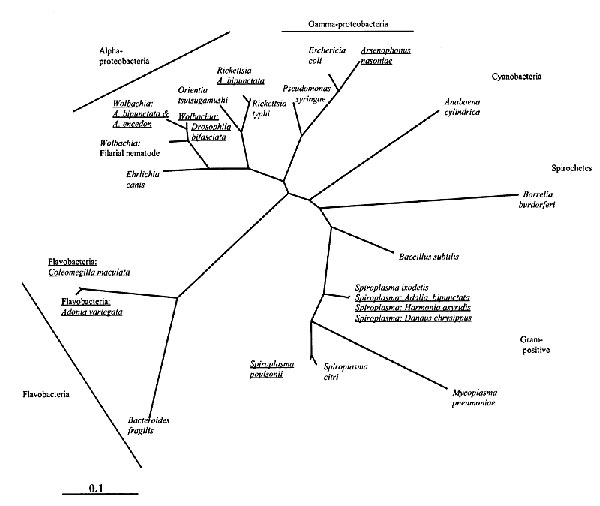Volume 6, Number 4—August 2000
Perspective
Male-Killing Bacteria in Insects: Mechanisms, Incidence, and Implications
Figure

Figure. Phylogenetic relationship of male-killers and a selection of other eubacteria inferred from 16S rDNA sequences, using maximum likelihood implemented on PAUP*. The male-killing bacteria (underlined) have been labeled with the name of their insect host if a species name is not available. The relationships of the major bacterial groups are uncertain.
Page created: December 16, 2010
Page updated: December 16, 2010
Page reviewed: December 16, 2010
The conclusions, findings, and opinions expressed by authors contributing to this journal do not necessarily reflect the official position of the U.S. Department of Health and Human Services, the Public Health Service, the Centers for Disease Control and Prevention, or the authors' affiliated institutions. Use of trade names is for identification only and does not imply endorsement by any of the groups named above.